Recommendation points
- Appointment
- Principle of operation
- Areas of use
- Structure and structure
- Mounting
- Repair methods
- Conclusion
The article will tell you how the UEC system works in PI pipes and how to make it right. The information is useful for those who want to save money and carry out the installation on their own, and for those who already have experience using such a heating network, but the remote control has failed or is performed poorly.
Ignorance of the basic principles of work, incorrect installation of elements and inability to handle devices often lead to the fact that all good things are considered useless or useless to anyone. So it happened with the system of operational remote control of heating networks: the idea was excellent, but the implementation, as always, let us down. The indifference of the customer, on the one hand, and the “responsible” work of the builders, on the other, have led to the fact that in our country SODK works correctly at best in 50% of the pipelines built, and is used by 20% of organizations. Taking, for example, Europe, not even distant, let’s say Poland, one can see that the incorrect operation of the remote control system is equated to a pipeline accident with urgent repair work. In our country, it is much more common to see a street excavated in the middle of winter in search of a place for a burst of a heating pipe than the summer preventive work of a brigade of electricians. In order to clarify, consider the SODK in heating systems from the very beginning.
Appointment
Heating pipelines from generation to generation remain steel, and the main cause of their destruction is corrosion. It occurs due to contact with moisture, and the outer wall of the metal pipe is more susceptible to rust. The main function of the SODK is to control the dryness of the pipeline insulation. Moreover, without distinguishing the reasons, both the ingress of moisture from the outside due to a defect in the plastic pipe-shell, and the ingress of the coolant on the insulation as a result of a defect in the steel heat pipe.
Using a special tool and SODK, you can determine:
- wetting insulation;
- distance to wet insulation;
- direct contact of the SODK wire and a metal pipe;
- breakage of SODK wires;
- violation of the insulating layer of the connecting cable.
Principle of operation
The system is based on the property of water to increase the conductivity of electric current. Used as insulation in PI pipes, polyurethane foam in the dry state has a huge resistance, which electricians characterize as infinitely large. When moisture enters the foam, the conductivity is instantly improved, and the devices connected to the system record a decrease in insulation resistance.
Areas of use
It makes sense to use pipelines equipped with an on-line remote control system for any underground laying. Quite often, even knowing that the pipeline has a defect and there are significant losses of the coolant, it is almost impossible to visually determine the location of the break. It is because of this that in the winter you have to either dig the entire street in search of a leak, or wait until the water itself flushes its way out. The second option quite often ends in news reports with notes that in the city of N, due to an accident on heating networks and a collapse of the earth’s surface, cars, people, or anything else that had the misfortune to be near fell through.
The location of the pipeline in the channel does not add to the information content. Due to the steam, it is not always possible to determine the leak point and the excavation work will still be significant and time-consuming. The only exception, perhaps, are large walk-through tunnels with communications, but they are rarely built and are very expensive..
The option of air-laying pipelines is the place where the UEC system makes no practical sense. All leaks are visible with the naked eye and there is no need to spend on additional control.
Structure and structure
PI pipes used in heating networks consist of a steel pipe, polyethylene sheathing pipe and polyurethane foam as insulation. This foam contains 3 copper conductors with a cross section of 1.5 mm2 with a specific resistance from 0.012 to 0.015 Ohm / m. Collect the wires located in the upper part in the circuit, in the “no 10 minutes 2 hours” position, the third remains unused. The signal or main conductor is considered to be located on the right in the direction of movement of the coolant. It enters all the branches and it is on it that the state of the pipes is determined. The left conductor is in transit, its main function is to create a loop.
To lengthen cable leads and connect pipelines to switching points, connecting cables are used. Usually 3 or 5 cores with the same cross section of 1.5 mm.
The switching terminals themselves are located in carpet boxes installed on the street or in the premises of pumping and heating points.
Measurements are carried out using specialized instruments. Usually it is a hand-held pulse reflectometer of domestic production. There are also certain devices for stationary installation, however, they are of little information and in most cases are not used.
Mounting
The assembly of all elements of the system takes place after welding the pipeline. And if most of the work on the construction of the heating main is carried out exclusively by specialists and using technology, then with a little knowledge in the field of electrical engineering and the presence of a soldering iron, a gas burner and a megohmmeter, work on the installation of remote control can be done by yourself. For correct execution, you should adhere to the following sequence:
- check the integrity of the conductors in the pipe insulation by ringing;
- remove foam to a depth of 2-3 cm, regardless of the degree of its wetting;
- carefully untwist and straighten the conductors rolled up for transportation;
- install plastic supports on the pipe, secure them with tape;
- clean the conductors with sandpaper and degrease;
- stretch the conductors within reasonable limits (excessive tension can cause the wire to break due to the thermal expansion of the pipe, insufficient to sag the conductor and contact with the pipe);
- connection and soldering of conductors to each other (do not confuse the signal and transit wires with each other);
- press the wires into special slots in the plastic stands;
- assess the strength of the connection with your hands;
- degrease with a solvent and dry the ends of the casing pipes with a gas burner for the subsequent installation of the coupling;
- warming up the prepared ends to a temperature of 60 degrees and installing glue;
- push the sleeve over the connection, after removing the white protective film, shrink with the burner flame;
- drill 2 holes in the sleeve to assess the tightness and subsequent foaming;
- assess the tightness: a pressure gauge is installed in one hole, air is supplied through the other, the quality of the connection is assessed by holding the pressure
- cut off the heat-shrinkable tape;
- warm up the place at the junction of the coupling / pipe-shell and attach one end of the tape;
- lay the tape symmetrically over the joint and secure with an overlap;
- warm up the lock plate and close the tape joint with it;
- shrink the tape with a burner flame;
- re-pressurize with air as described above;
- mix the foaming components A and B and pour through the hole into the cavity under the installed coupling;
- when moving the foam to the hole, install a drain plug to remove air;
- after the end of foaming, clean the surface of the coupling from foam and install a welded plug;
- after collecting the system in the pipe part, build up the conductors at the outlet points;
- install carpet boxes;
- lay extended conductors in galvanized pipes from the outlet on the pipe to the installed carpet box;
- install and connect switching terminals in accordance with the project;
- connect stationary detectors;
- perform a full check with an OTDR.
In the description, an option is considered using heat-shrinkable couplings; there is another type of joint insulation – electrowelded couplings. In this case, the process will be a little more complicated due to the use of electric heating elements, but the essence will remain the same..
When performing work on the installation of the UEC system, there are also the most common mistakes. They rarely depend on who did the work – the customer himself or the builder. The most important of these is loose fitting of couplings. If there is no tightness, the system may show wet after the first rain. The second mistake is the unselected foam at the joints: even if it looks visually absolutely dry, it often carries an excess of moisture and affects the correct operation of the system. After detecting a particular defect, one should observe the dynamics and decide when to make repairs: immediately or in the summer between heating periods..
Repair methods
Repair of the UEC system is sometimes required already at the construction stage. Consider a few common cases.
- The signal wire is broken at the exit from the insulation.
Foam should be removed until the required amount of conductor is formed and the length should be increased by soldering an additional wire (you can use the remains from other joints). When soldering, you should be careful not to ignite the pipeline insulation.
- UEC system wire is in contact with the pipe.
If it is impossible to get to the point of contact without breaking the integrity of the sheath, the third unused wire should be used to connect to the circuit instead of the defective conductor. If all conductors are unsuitable due to factory defects, the supplier should be notified. Depending on its capabilities and your desire, the pipe will be replaced or repaired with cost reduction right on the spot. If for any reason communication with the supplier is impossible, self-repair is carried out as follows:
- determination of the place of contact;
- section of the shell pipe;
- sampling of foam;
- elimination of contact, if necessary, conductor soldering;
- restoration of the insulation layer;
- restoration of the integrity of the casing pipe using a repair sleeve or an extruder.
During the operation of heating networks, repairs are associated not so much with the restoration of functionality, but with drying the foam. The reasons can be very different: construction errors when sealing couplings, a rupture of a heat pipe, inaccurate excavation near pipes and much more. If moisture gets in, the best option is to remove it to normal resistance values. This is achieved in various ways: from drying with an open shell to replacing the insulating layer. The degree of dryness is controlled by a pulse reflectometer. After reaching the required indicators, the restoration of the integrity of the shell is carried out in the same way as described above..
Conclusion
Finally, I would like to express the hope that after reading the article, not only private traders who build networks to their production building or office will think about the need to apply a control system, but also services that are closely involved in the operation of pipelines. Perhaps then there will be much less accidents and financial losses in the district heating of cities..

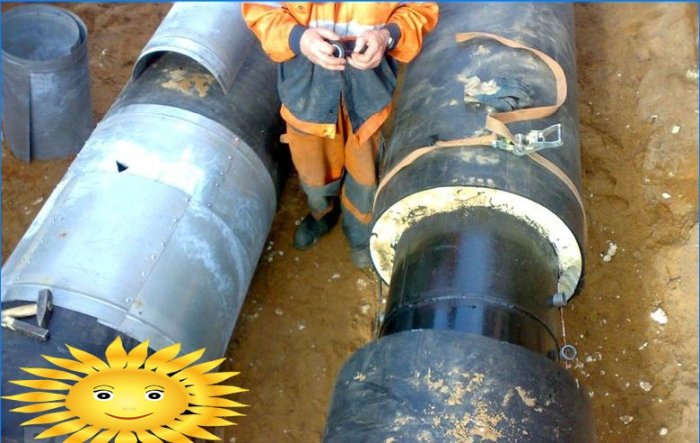


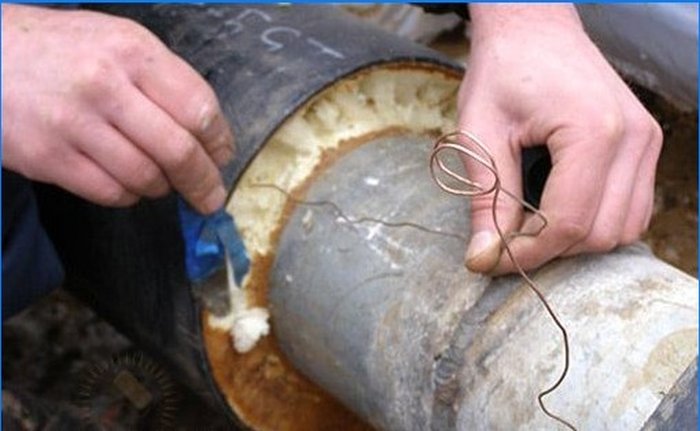
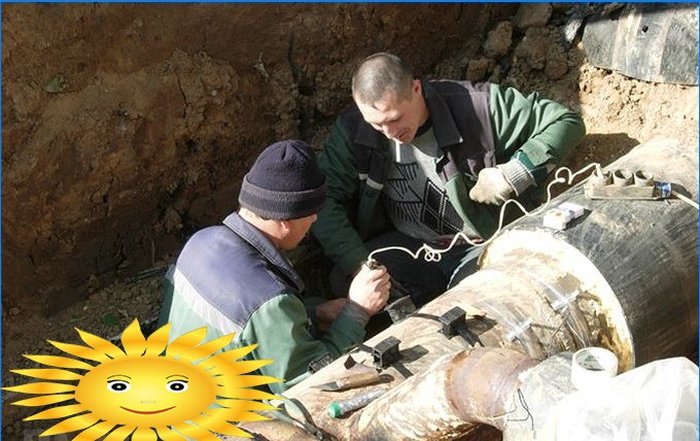
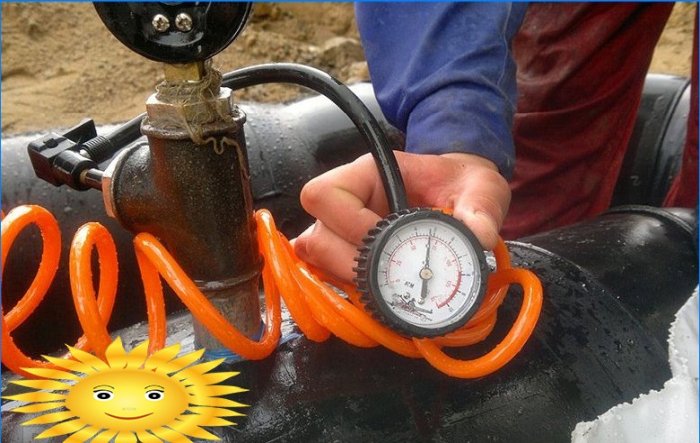
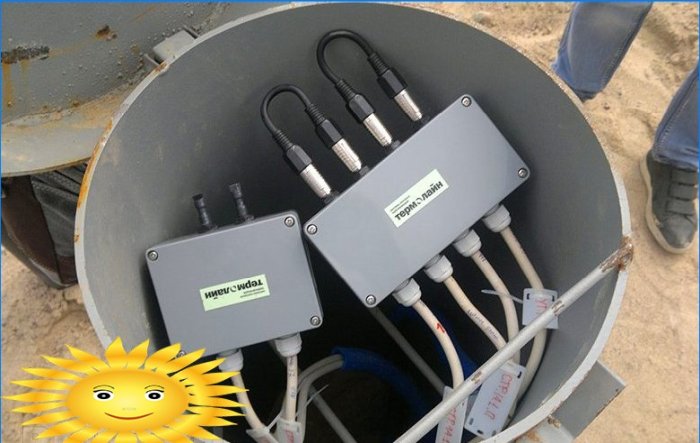

Is SODK in the heating network considered as empty waste or is it actually an irreplaceable element? I’m curious about its significance and role in the heating system.